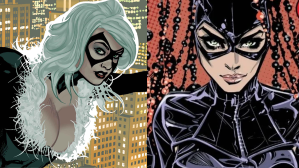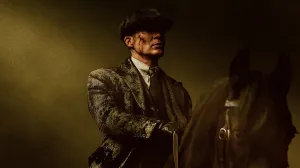Marvel and DC Comics are the most prolific superhero publishers of all time. One of the main reasons Marvel and DC Comics got so popular wasn’t just because they created multiple amazing characters over the years, but because of the creators who worked on the books. Comics wouldn’t be where they are now without creators like Jack Kirby, Gardner Fox, Jerry Siegel, Joe Shuster, Stan Lee, Steve Ditko, Chris Claremont, John Byrne, Frank Miller, Alan Moore, Grant Morrison, and many, many more. Most of these creators made names for themselves by defining and re-defining characters in long runs on solo and team books, helping to push superheroes forward.
Videos by ComicBook.com
Once upon a time, as long as a book was successful, the creators would stay on it for as long as possible. Kirby and Lee did 108 issues of Fantastic Four. Stan Lee, along with Steve Ditko and John Romita Sr., worked on The Amazing Spider-Man for 119 issues. Chris Claremont started writing the X-Men with X-Men #94 and wrote the book until #279. This was the way the comic industry once worked, but it has changed a lot over the years. Since the end of the ’90s, most successful runs go for two to four years tops. Things have changed a lot, and an argument can be made that comics would be better going back to longer runs.
The Best Runs of All-Time Have Been Long Ones

The best argument for long runs comes from Chris Claremont’s landmark run on Uncanny X-Men. If you like the X-Men at all, there’s a good chance you like it because of something Claremont did on the book. Claremont created some of the most popular X-Men, like Gambit and Rogue. He defined the characters he didn’t create, like Wolverine, Storm, Cyclops, Colossus, Jean Grey, and Nightcrawler. He wrote classic stories, like “The Dark Phoenix Saga” or “Days of Future Past”. Claremont established the ideas and voices of the characters, and readers knew that even if they didn’t like the plot, they loved the characters.
Claremont’s run lasted 17 years and it remains one of the greatest runs of all time. Peter David had a similarly long run on The Incredible Hulk, writing the book from #335 to 448. David took the character and refined it, adding in all of the deep psychological ideas that fans love about the character. Mark Waid wrote the Flash for years. Larry Hama wrote Wolverine (Vol. 2) for seven years. Geoff Johns helped make the Justice Society the greatest team ever, all while giving readers amazing long runs on the Flash and Green Lantern. These creators took classic characters and concepts and unleashed their entire imagination on them, creating some of the best stories ever. This is what you can get when you let creators work on a character or team for a long stretch.
Long runs allow creators to grow a character organically. Look at Wally West. Wally started as Kid Flash, and later took up the mantle of the Flash. The Flash (Vol. 2) wasn’t selling well, and then Mark Waid (joined by editor Bryan Augustyn) took over the character. Waid developed Wally, maturing the character, giving him love interests, building his relationships with his fellow heroes, and giving him his marriage with Linda Park. The consistent voice on The Flash made it all make sense in a way that multiple writers over the same amount of time couldn’t. Sure, all of those things could happen, but they wouldn’t feel the same as they did. Long runs develop characters better, because its one writer working on them for a long period of time. This may seem like a no-brainer, but it’s something that it feels like Big Two has lost over the years.
These long runs also meant that changes to the character would last longer. Characters actually grew back then; we weren’t getting mini-reboots every time a creative team came on. Fans became accustomed to this type of storytelling, and later creators, like Scott Lobdell on Uncanny X-Men or Geoff Johns on The Flash, continued the ideas and characteristics of the characters established over these long runs. Now, there have still been long runs in recent years. Dan Slott, Jason Aaron, Al Ewing, Kelly Thompson, and many more have gotten rather long runs on characters, but for the most part, even popular characters get creative team changes rather quickly compared to the old days. Not everything needs to be a Claremontian 17-year run, but a five-year run for a book with consistent sales should be the norm and not the anachronism.
Dan Slott’s run on The Amazing Spider-Man is much better than it gets credit for, and it works because Slott was the sole creative force (along with his sometimes-scripter Christos Gage). Slott gave us the Spider-Verse. Al Ewing’s The Immortal Hulk worked so well because it had one voice making it work. Kelly Thompson’s Captain Marvel is an unsung classic on the character, all because she was allowed to develop the character for years. You can list off great long runs all day (and yes, if I’m being honest, the 50 issue run of something like The Immortal Hulk is shorter than what I would consider a long run, but it’s the best we get nowadays), while the shorter runs don’t have the same oomph.
There Are No Drawbacks to Long Runs

Starman (Vol. 2) ran for 80 issues in the ’90s. It followed Jack Knight as he took up the mantle of Starman from his brother David, who took it up from their father Ted. James Robinson, along with artist Tony Harris, was able to play with legacy beautifully and really fleshed out the Knight family and what the Golden Age superheroes meant to the modern day. It’s a perfect series that shows why long runs are the best.
I think one of the strengths of the current short runs we have now is that they allow different voices to give us different takes on characters. However, there have been many times over the years where a two year run by a great creative team was ended and I wished it hadn’t. I think that’s a pretty common feeling among fans nowadays. There are also plenty of runs out there that could have been better if they would have lasted longer. Long runs truly build characters in a way that constant shorter runs don’t. Not every run needs to be over five years, but things would be better if there were more of them.
What do you think? Leave a comment below and join the conversation now in the ComicBook Forum!









